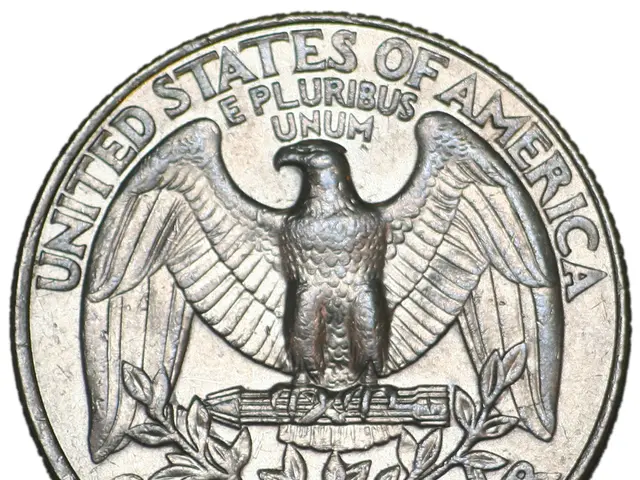Barclays' equities surging due to significant sales from their investment division amid financial turmoil.
Barclays Shines in Q1 2025: A Closer Look
Barclays had a stellar first quarter of 2025, with its investment and private banking arms cashing in on market volatility. The bank's shares rose over 1.5% during early trading on Wednesday.
The financial giant's investment bank boosted income by 16% to £3.9 billion, compared to £3.3 billion from the same period in 2024. Barclays' private bank and wealth management business topped £349 million - a 12% increase. This surge was driven by higher transactional activity in global markets after numerous share sell-offs ahead of President Trump's sweeping tariffs on trading partners.
Barclays recorded a loan loss rate of 61 basis points and reserved a £74 million provision for "elevated US macroeconomic uncertainty." This follows in the footsteps of its FTSE 100 peer HSBC, which also reserved extra bad loan funds in its first-quarter report.
The market volatility helped boost Barclays' group income 11% year-on-year to £7.7 billion, offsetting a five% increase in operating expenses to £4.4 billion. The firm booked a £2.7 billion pre-tax profit, ahead of the £2.5 billion predicted by analysts.
Matt Britzman, senior equity analyst at Hargreaves Lansdown, said, "Barclays has quite comfortably beaten expectations, after its investment banking arm cashed in on market volatility over the first quarter. 'In the main, trends across the portfolio look strong, from stable US credit card write-offs to low default levels on UK cards and loans.'"
Barclays' Net Interest Margin and Its Impact on Profitability
In Q1 2025, Barclays reported a strong performance, largely due to a surge in net interest income (NII) and fixed income trading revenues. The bank's NII for Q1 2025 increased significantly, leading to a revised guidance of more than £12.5 billion for FY 2025, up from the previous estimate of around £12.2 billion. Specifically, Barclays UK's NII is projected to exceed £7.6 billion, up from the previous target of about £7.4 billion.
The rise in NII has positively impacted Barclays' profitability. The bank's return on tangible equity (RoTE) reached 14% in Q1 2025, surpassing its full-year guidance of approximately 11%. The enhanced profitability is also reflected in a 19% surge in profit compared to the same period last year.
Looking ahead, Barclays aims to maintain a cost-to-income ratio of around 61% in 2025. The bank is also focusing on reducing the share of investment bank risk-weighted assets to about 50% of the group's total by 2026. Additionally, Barclays is positioning itself for continued growth by locking in future earnings, with £10.2 billion secured across 2025/26.
In conclusion, Barclays' increase in net interest margin and NII has significantly contributed to its profitability in 2025. Going forward, the bank is well-positioned to pursue strategic goals, despite market uncertainties, by focusing on cost management, risk reduction, and capital returns to shareholders.
- The surge in net interest income (NII) and fixed income trading revenues helped Barclays record a strong performance in Q1 2025, leading to a revised guidance of over £12.5 billion for FY 2025.
- The rise in NII has positively impacted Barclays' profitability, as the bank's return on tangible equity (RoTE) reached 14% in Q1 2025, surpassing its full-year guidance of approximately 11%.
- Barclays' focus on cost management is evident in its aim to maintain a cost-to-income ratio of around 61% in 2025.
- In personal-finance terms, Barclays' enhanced profitability translates to a 19% surge in profit compared to the same period last year.
- To position itself for continued growth, Barclays is focusing on reducing the share of investment bank risk-weighted assets to about 50% of the group’s total by 2026 and securing £10.2 billion across 2025/26.
- Despite market uncertainties, Barclays' proactive strategies for cost management, risk reduction, and capital returns to shareholders make it well-prepared to pursue its strategic goals in the economy, banking, and investment industries, as well as in the business and personal-finance arenas.






